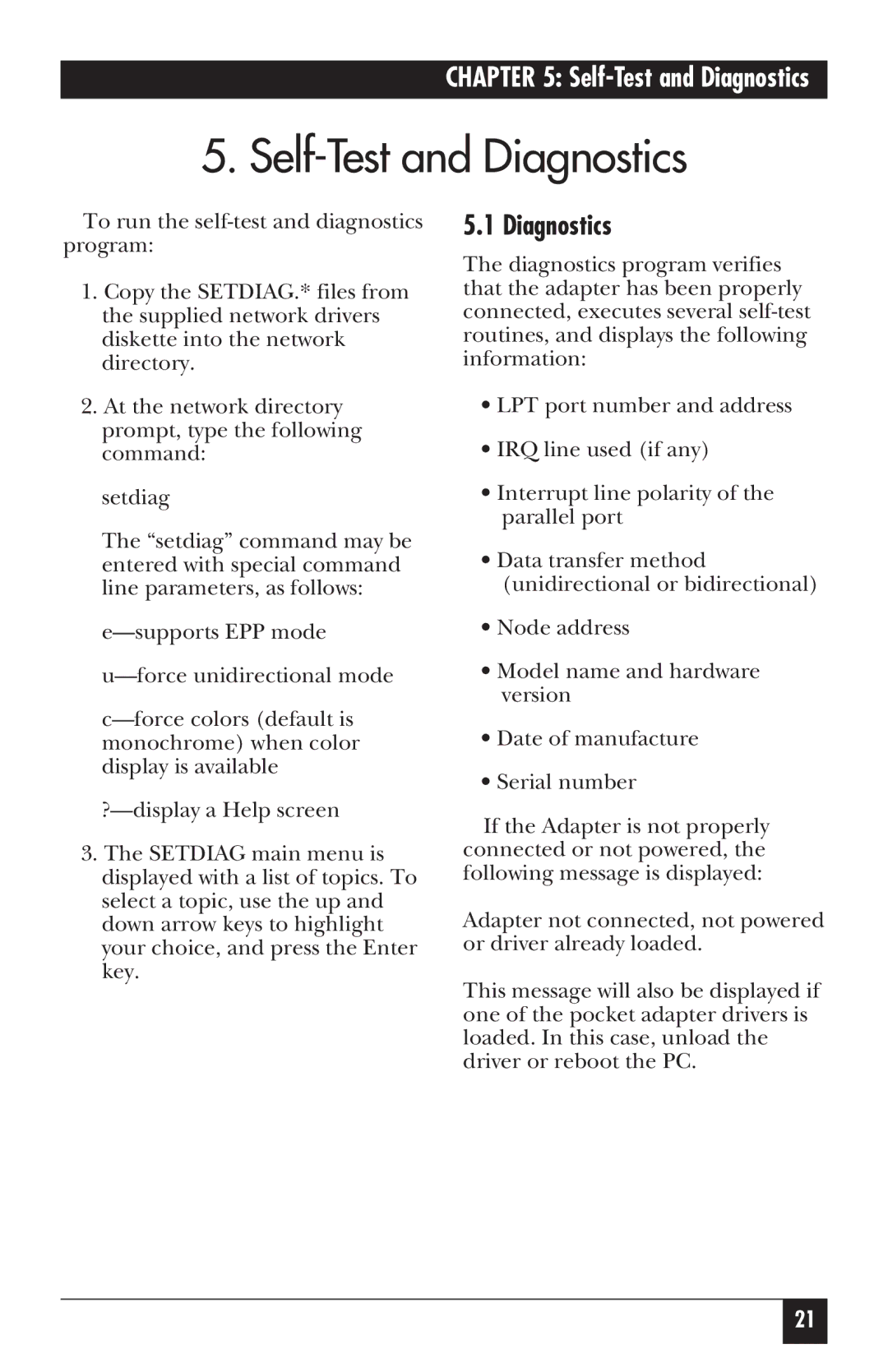
CHAPTER 5:
5. Self-Test and Diagnostics
To run the
1.Copy the SETDIAG.* files from the supplied network drivers diskette into the network directory.
2.At the network directory prompt, type the following command:
setdiag
The “setdiag” command may be entered with special command line parameters, as follows:
3.The SETDIAG main menu is displayed with a list of topics. To select a topic, use the up and down arrow keys to highlight your choice, and press the Enter key.
5.1 Diagnostics
The diagnostics program verifies that the adapter has been properly connected, executes several
•LPT port number and address
•IRQ line used (if any)
•Interrupt line polarity of the parallel port
•Data transfer method (unidirectional or bidirectional)
•Node address
•Model name and hardware version
•Date of manufacture
•Serial number
If the Adapter is not properly connected or not powered, the following message is displayed:
Adapter not connected, not powered or driver already loaded.
This message will also be displayed if one of the pocket adapter drivers is loaded. In this case, unload the driver or reboot the PC.
21
